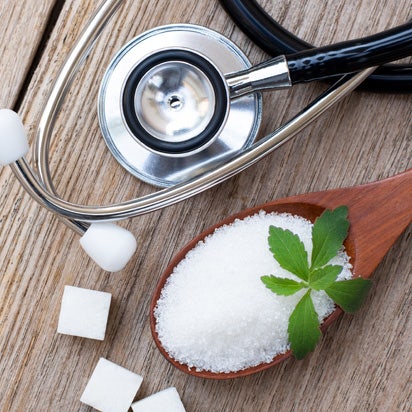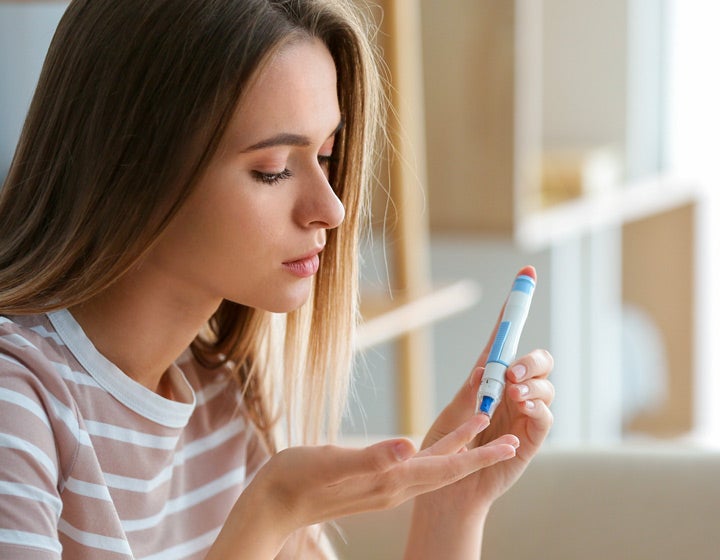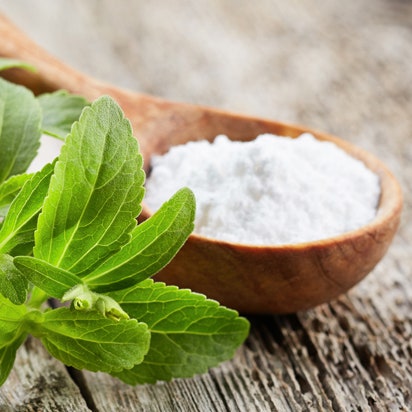
Stevia and diabetes management

Diabetes Mellitus is a chronic disease that occurs when the pancreas does not produce enough insulin or when the body cannot effectively use the insulin it produces. This leads to an increased concentration of glucose in the blood known as hyperglycemia, which can lead to nerve and blood vessel damage and increase the risk of heart attacks, stroke and kidney failure.
Diabetes is on the rise across the globe. Worldwide estimates in 2021 indicate 1 in 10 adults were living with diabetes (537 million), an increase of more than 100 million in just four years (2017). If you are living with diabetes or have been diagnosed with pre-diabetes, you know good nutrition is perhaps one of the most important factors in achieving good health. The foods you choose to eat, being physically active, maintaining a normal body weight and taking medications, if recommended, can make a big difference in your daily health.

Managing blood sugar levels with diet and exercise
While there are some risk factors for diabetes that cannot be changed, such as genetics, advancing age and family history, maintaining a healthy weight and getting regular physical activity play an important role in managing blood sugar levels.
Fortunately, having diabetes does not mean having to give up all of your favorite foods. You can literally have your cake and eat it too — occasionally and in moderation, of course — so long as you work it into your eating plan.
This is where stevia fits in. so they do not independently affect blood sugar or insulin levels. It helps to cut sugar and calories in many foods and beverages while still allowing you to enjoy indulgent sweet taste.
Research has clearly documented that steviol glycosides have no impact on glucose homeostasis among people with diabetes. A randomized controlled trial among 122 adults over 16 weeks who were given four doses of approximately 330 mg of steviol equivalents (approximately 4-6 packets of table top stevia) over the course of a day compared to placebo had no impact on blood sugar levels. For this study, >97% rebaudioside A was used.
Additionally, the position paper on nutritive and non-nutritive sweeteners from the Academy of Nutrition and Dietetics reviewed five randomized controlled trials examining the effects of stevia compared with placebos on metabolic outcomes. The collective takeaway from these studies was a report of minimal to no effects on blood glucose, insulin levels, hypertension and body weight.
Stevia has been shown to significantly reduce postprandial blood glucose with consumption of reduced-sugar and lower-calorie meals in both healthy subjects and diabetics. In one study, subjects with type 2 diabetes reported a reduced postprandial blood glucose and glucagon response after a test meal of stevia versus placebo.
When stevia and aspartame were compared to the effect of sucrose on post-meal blood glucose and insulin levels in 31 obese and lean subjects, blood glucose levels were significantly lower 20 minutes after the stevia preload as well as 30 minutes after lunch. In addition, postprandial insulin levels were also significantly reduced with stevia compared to sucrose (p=0.03).
Stevia is now found in thousands of products around the world from salad dressings to beverages and snack bars and it allows people with diabetes to enjoy sweet taste while managing their calorie intake. Often, stevia is used in combination with nutritive sweeteners like sugar or in foods and beverages that contain other simple carbohydrates, so it is still important to check ingredient labels for total carbohydrate content and overall nutritional information.
You will find stevia in a wide range of food and beverages, including teas, soft drinks, juices, yogurt, soymilk, baked goods, cereal, salad dressings, confections and as a table-top sweetener. Stevia is a great option to use for making recipes diabetes-friendly, too, offering its touch of sweetness and adaptability in baking and cooking.
Other stevia science and research
References
- International Diabetes Federation Atlas 10th edition Available at: https://diabetesatlas.org/#:\\~:text=Diabetes%20around%20the%20world%20in%202021%3A,and%20783%20million%20by%202045.
- World Health Organization. Global Report on Diabetes. Available at: http://www.who.int/diabetes/global-report/en/
- International Diabetes Federation. IDF Clinical Practice Recommendations for Managing Type 2 Diabetes in Primary Care.
- Fitch C and Keim KS. Position of the Academy of Nutrition and Dietetics: Use of nutritive and nonnutritive sweeteners. J Acad Nutr Diet. 2012;112:739–58. Available at: https://jandonline.org/article/S2212-2672(12)00325-5/fulltext
- Gardner C, et. al. Nonnutritive sweeteners: Current use and health perspectives: A scientific statement from the American Heart Association and the American Diabetes Association. Circulation. 2012;126:509–19. Available at: http://circ.ahajournals.org/content/126/4/509.long
- Anton SD, et. al. Effects of stevia, aspartame, and sucrose on food intake, satiety, and postprandial glucose and insulin levels. Appetite. 2010;55:37–43. Available at: https://www.ncbi.nlm.nih.gov/pmc/articles/PMC2900484/
- Jeppesen PB. Is there a correlation between high sugar consumption and the increase in health problems in Latin America. Chapter 1. Sugar and Modernity in Latin America: Interdisciplinary Perspectives. Mariano de Carvalho V, Hojlund S, Jeppesen PB, Simonsen K-M (eds.) Aarhus: Aarhus University Press; 2014. pp. 25-54.
- American Diabetes Association® Standards of Medical Care in Diabetes 2017. Diabetes Care Jan 2017, 40 (Supplement 1).
- EFSA Panel on Dietetic Products, Nutrition, and Allergies (NDA); Scientific Opinion on the substantiation of health claims related to intense sweeteners and contribution to the maintenance or achievement of a normal body weight (ID 1136, 1444, 4299), reduction of post-prandial glycaemic responses (ID 4298), maintenance of normal blood glucose concentrations (ID 1221, 4298), and maintenance of tooth mineralisation by decreasing tooth demineralisation (ID 1134, 1167, 1283) pursuant to Article 13(1) of Regulation (EC) No 1924/2006. EFSA Journal 2011;9(6):2229. [26 pp.]. doi:10.2903/j.efsa.2011.2229. Available online: www.efsa.europa.eu/efsajournal
- Maki et al., Chronic consumption of rebaudioside A, a steviol glycoside, in men and women with type 2 diabetes mellitus, Food and Chemical Toxicology. 2008;46:S47-S53
- Academy of Nutrition and Dietetics. Position of the Academy of Nutrition and Dietetics: use of nutritive and nonnutritive sweeteners. 2012; 112 (5): 739-758.
- Gregersen S, et al., Antihyperglycemic effects of stevioside in type 2 diabetic subjects. Metabolism. 2004; 53(1): 73-76.
- Anton SD, Martin CK, Han H, Coulon S, Cefalu WT, Geiselman P, Williamson DA. Effects of stevia, aspartame, and sucrose on food intake, satiety, and postprandial glucose and insulin levels. Appetite. 2010 Aug;55(1):37-43.








